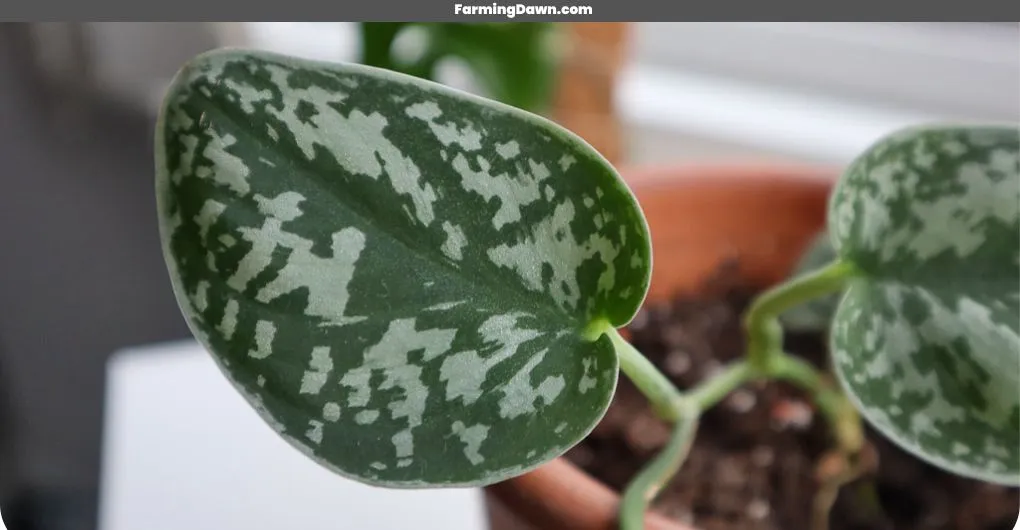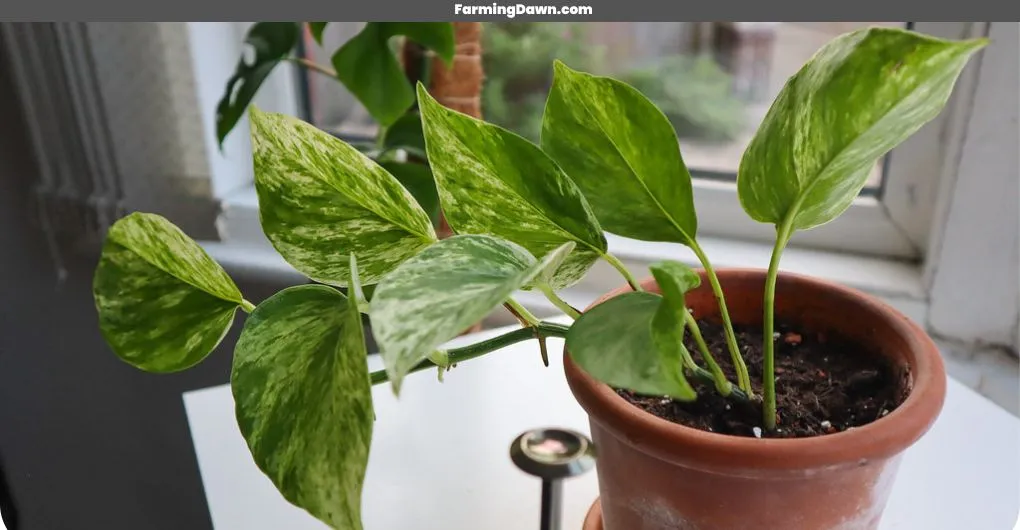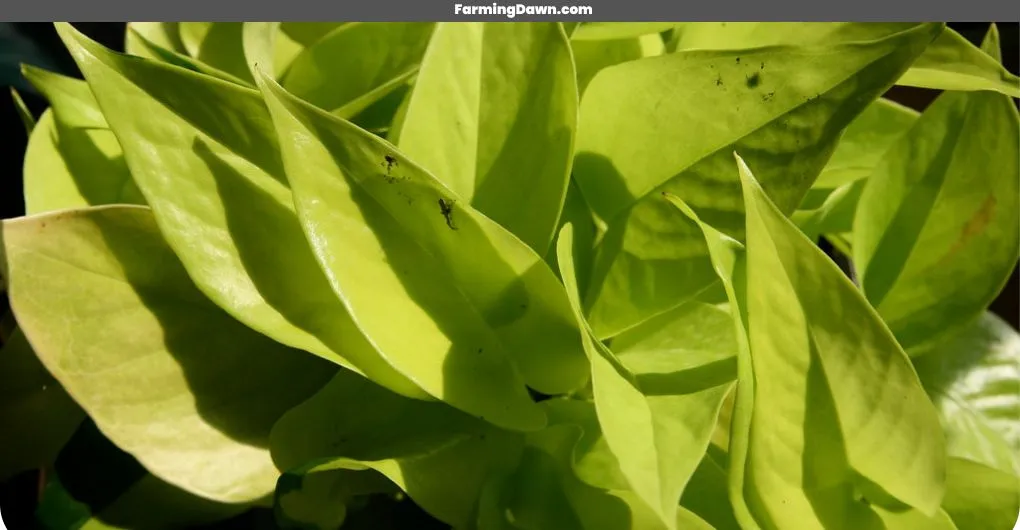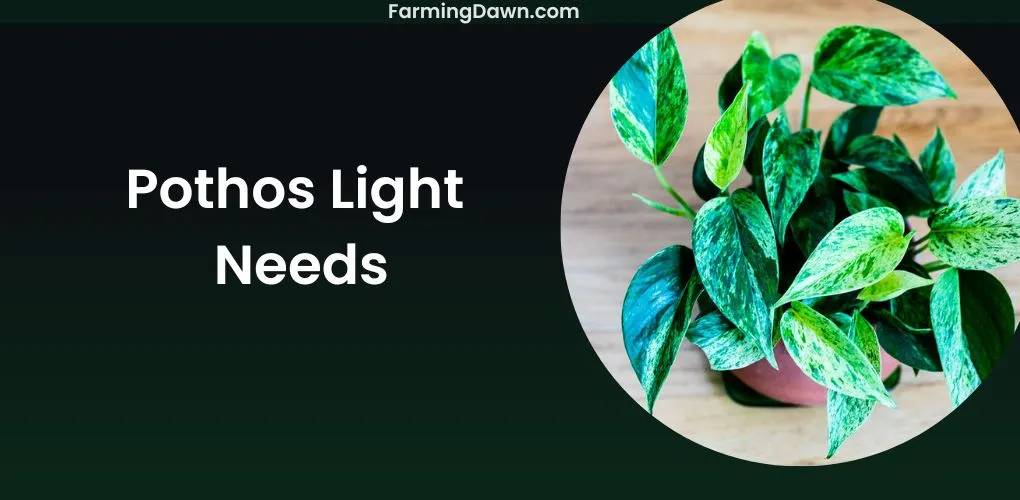If you’ve got a pothos plant in your home, then chances are you already know how important it is to give it the right kind of lighting – but if not, don’t worry! because this post is all about your pothos light needs. In this article, I’ll explain why having adequate light for your pothos matters, as well as what kind of lighting conditions they need to thrive. With my guidance, you can make sure that your beloved pothos gets all the care it deserves, so let’s get started!
Understanding The Basics Of Pothos Light Needs
When it comes to pothos care, light is king! It’s the chief ingredient for a healthy plant. As the saying goes, “If you can’t give your plants enough light, nothing else matters” and that couldn’t be more true in this case!
Whether you opt for natural or artificial lighting, understanding these needs can make all the difference when trying to cultivate an impressive indoor collection of pothos. So let’s dive into just what they need and how we can provide it.
Related: Do succulents need sun?
Types Of Lighting For Pothos Plants
When it comes to pothos light needs, there are a few key things that you need to know. Thrive in bright indirect sunlight or even artificial lighting, ideally within four feet of the window. For those without access to natural light, fluorescent bulbs, and LED lights provide excellent options for growing your pothos indoors.
You don’t have to worry about getting special grow lights either; just make sure whatever bulb you use is labeled “full spectrum” so that your plant can get all the wavelengths of light it needs. Let’s discuss the types of lighting for pothos in detail.
Indirect Light
So now let’s talk about indirect light. This is a great option for pothos plants because they thrive in bright, but not direct sunlight. I know what you’re thinking: how can I get that type of light? Well, there are plenty of ways to do it! You could place your plant close to the window with no curtains or blinds, just enough light will filter through and provide the perfect amount of brightness but without any harshness.
Alternatively, you could use an artificial grow light suspended above your pothos, this way you’ll be sure that they are getting the exact right amount of indirect sun. There’s also the option of placing them outdoors on a porch or balcony where they will benefit from some natural filtering by trees and bushes. All these options should give your pothos exactly what it needs to flourish!
Direct Sunlight
The sun’s warm rays can be a beautiful thing, providing life and energy to all who bask in its light. I’m sure you’ve felt the beauty of it yourself, the warmth on your skin, the gentle breeze blowing through your hair; it almost makes you feel as if you’re part of something bigger, like Mother Nature herself is embracing you.
Pothos plants need direct sunlight for more than just that feeling though: they need it for photosynthesis and growth too! That means finding an area with plenty of natural light or using artificial lighting (if necessary) will help ensure success when growing these plants indoors. If you provide proper care, pothos can thrive in any environment they are placed in – even without direct sunlight.
Artificial Light
Natural sunlight is the best for pothos needs, but if you don’t have access to a window with direct sun exposure, or your windows are too far away from the plant, then artificial lighting could be an option. Artificial lights come in many different forms and styles, so make sure to choose one that works for you and your space.
Make sure to keep it close enough and above the leaves, as this will ensure more efficient absorption of energy by your plant’s foliage which can help it grow vigorously. So while finding adequate natural sunlight may not always be possible, there’s no reason why you can’t give your pothos plenty of good quality artificial light instead!
Light Intensity
Understanding how much light intensity is needed for pothos plants is paramount to their success. Natural or artificial light can be just as beneficial for a plant if it’s the right intensity and duration. But getting the lighting levels just right isn’t always easy, especially when you don’t want to keep your plants in direct sunlight all day long!
As with many things in life, too little of something may not be enough while too much could end up being detrimental. The same holds true for light intensity and pothos needs. If they get too much direct sun exposure, they’ll start to fade away until eventually they won’t survive; on the other hand, without enough indirect sunlight, they will struggle to stay healthy and vibrant.
Therefore, finding that perfect balance between what’s best for them and what’s feasible in terms of practicality might seem tricky at first but knowing some basic principles about light intensity can help immensely.
Light Duration
If you want your plant to grow and thrive, you need to make sure it’s getting the right amount of sun. Depending on the type of pothos you have, this could mean keeping it in direct sunlight for at least 10-12 hours a day or giving it bright indirect light throughout the day.
You should also consider how long the light duration should be, too much can damage your plant! Make sure to provide consistent lighting for your plants so they can enjoy their best life.
Benefits Of Providing Appropriate Light To Pothos Plants
I’m sure we’ve all experienced the joy of having a living thing in our home, and pothos plants are no exception. They bring life to any room with their vibrant leaves and easy care needs. One of those needs is light, so providing the right amount to your plant will not only help it thrive but also keep you feeling connected to nature.
Not giving appropriate lighting means that the plant won’t grow as fast or have as much energy; this can leave us feeling frustrated at times if we’re expecting certain results from them. That’s why it’s important to give our pothos plants plenty of light – they need it for photosynthesis!
Doing this makes them stronger, healthier, and more resilient which can make caring for them easier over time – plus, there’s nothing quite like seeing how happy they are when given what they need!
See more: How to grow and care for Philodendron squamiferum.
3 Signs Your Pothos Isn’t Receiving Enough Light
It’s like a plant slowly gasping for air: signs your pothos isn’t receiving enough light can be subtle, but are easy to spot with some knowledge.
- Yellowing leaves
One of the most obvious symptoms is yellowing leaves; if there’s not enough sunlight, the foliage won’t stay its deep green hue and will start to take on an unhealthy color instead.
- Stunted growth or wilting
You might see stunted growth or wilting in more serious cases – as plants need light to photosynthesize and grow, any lack thereof will stop them from reaching their full potential.
- Brown tips and edges
Lastly, brown tips and edges on the foliage may also occur when your pothos is suffering from too little sun exposure. All these indicators should be taken seriously and rectified quickly in order to keep your plant thriving!
Learn more: Complete Guide on growing Manjula Pothos.
Satin Pothos Light Needs
Now let’s discuss the special light needs of Satin Pothos plants. These beauties, with their large oval-shaped leaves and glossy sheen, are even more sensitive to light than ordinary pothos. They need bright, indirect sunlight in order for them to thrive, but not too much! Too much direct sun can cause leaf burn or wilting.
While they do prefer a few hours of direct morning rays, it’s best to give them dappled shade during the hottest part of the day. When kept indoors, place your plant within twelve feet of an east-facing window. This way you get all the benefits without putting your precious greenery at risk of getting fried by the sun’s harsh rays.

Golden Pothos Light Needs (Devil’s Ivy)
Golden pothos, otherwise known as Devil’s Ivy, is an easy-care plant that requires minimal light to thrive. It can be kept in bright or medium indirect light, but it won’t need direct sunlight to survive. However, if you have your golden pothos near a window with lots of sun exposure, make sure the leaves don’t get scorched by moving them further away from the window and out of direct sunlight.
If you think your golden pothos needs more light than what is currently available in your home, then try supplementing its natural light with grow lights. These specially designed bulbs provide additional nutrients for plants and will help keep your devil’s ivy healthy and happy!

Marble Queen Pothos Light Needs
Well, now that we have gone over the light needs for golden pothos (Devil’s ivy), let’s move on to marble queen pothos. This is another popular variety of houseplants, and it has its own unique requirements when it comes to lighting. Like devil’s ivy, this plant prefers bright indirect sunlight but can tolerate medium levels as well.
However, if you want your marble queen to thrive, then I recommend investing in a good grow light or moving it closer to the window where there is plenty of natural sunlight available. With proper care and attention, you will be rewarded with lush foliage that cascades gracefully down from its vining stems!

Neon Pothos Light Needs
Twisting and winding around a trellis or pot, neon pothos is an energetic addition to any home. Its bright green foliage with its yellow-white variegation creates a stunning effect of light in the room; like sunshine spilling over into the space.
Neon pothos needs indirect sunlight and consistent watering – allowing the top inch of soil to dry out between waterings. Additionally, it should be fertilized every two weeks during spring and summer months for optimal growth, while indoor humidity should remain at 50% or more. With proper care, these plants will bring life and vibrancy to your space!

Frequently Asked Questions Related To Pothos Light Needs
How much light should a pothos get?
Pothos plants prefer bright, indirect light but can also tolerate low-light conditions. East-facing or west-facing windowsills are ideal for Pothos as they provide morning or afternoon sun that is less intense than the midday sun.
If you don’t have a sunny windowsill, these plants can also thrive under fluorescent lights. If using artificial light, keep it on for at least 12 hours a day to mimic natural daylight.
Can pothos grow in low light?
Yes, Pothos can grow in low light conditions, but it may not grow as quickly or produce as many leaves as it would in brighter light. Pothos is a versatile plant that can tolerate a range of lighting conditions, but it does best in bright, indirect light.
How do I know if my pothos is getting enough light?
If your Pothos is getting enough light, you should see healthy, vibrant growth with deep green leaves. Signs that your plant is not getting enough light include slow growth and smaller leaves. If your Pothos is getting too much light, you may see brown or yellow spots on the leaves, or the leaves may become bleached. Adjust the lighting to find the right balance for your plants.
Can pothos survive on indoor light?
Yes, Pothos can survive on indoor light, as long as they receive enough bright, indirect light for a few hours a day. Consistency in lighting is important for Pothos, so avoid sudden changes in light levels. Providing them with moderate lighting is key for their health and growth.
Can pothos take direct morning sun?
Pothos can tolerate some direct morning sun, but it is not ideal for their growth. Prolonged exposure to direct sunlight, even in the morning, can cause the leaves to become bleached, burnt, or even die.
It is best to provide your Pothos with bright, indirect light for a few hours a day. And if you want to move your plants outdoors, gradually introduce them to the sun and provide some shade during the hottest parts of the day.
Final Verdict: Pothos Light Needs
I hope after reading this post you know, what are your Pothos light needs. As a houseplant enthusiast, you must understand the light requirements of your plants in order to ensure they thrive. Pothos come in many varieties and each requires its own unique lighting needs.
Whether you choose indirect light, direct sunlight, or artificial light for your pothos, with proper understanding and adequate care it will be sure to grow strong and healthy. I’m confident that by following these guidelines for satin pothos, golden pothos (Devil’s ivy), marble queen pothos, and neon pothos light needs you’ll have beautiful foliage adorning your home in no time!






